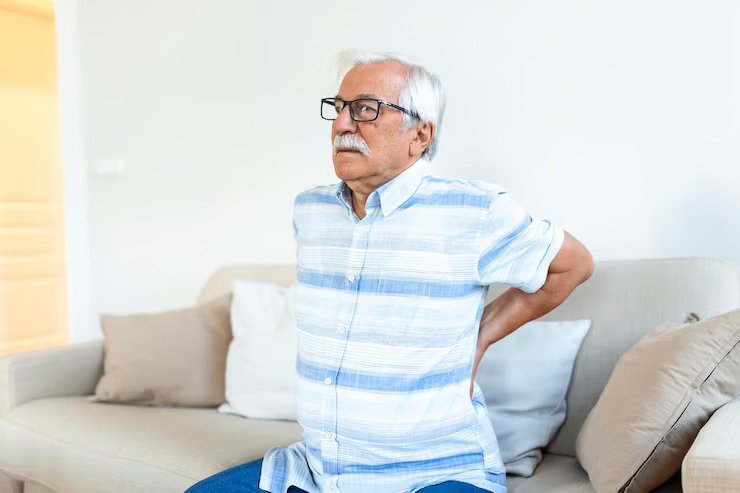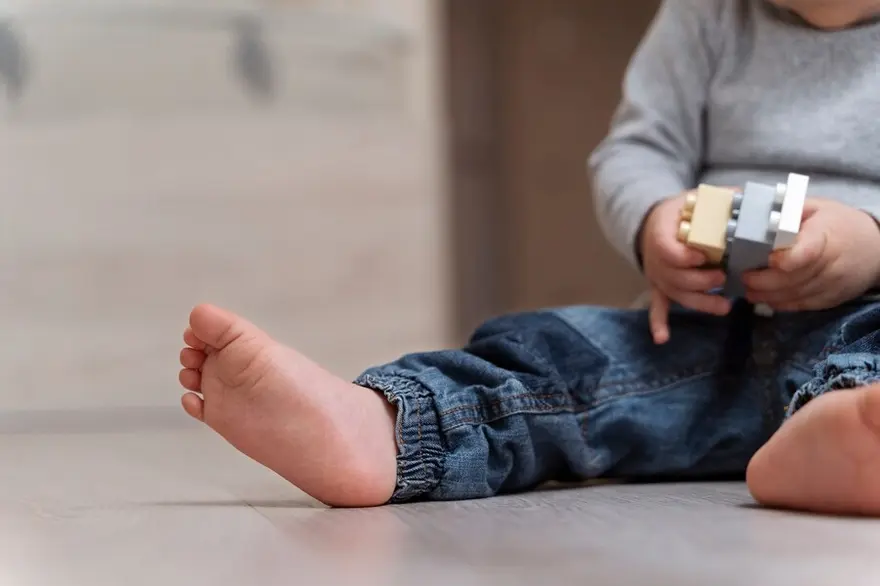Preventive Healthcare
Degenerative Disk Disease: Symptoms, Causes, Surgery, Treatment
1640 Views
0

Degenerative Disc Disease (DDD) is the complete wear-down of the spinal discs. These rubbery cushions between the vertebrae are shock absorbers that help you twist, bend, and move comfortably. When the spinal discs wear away, they cause the bones to rub together. This causes further pain and problems like spinal stenosis, adult scoliosis, spondylolisthesis, and spinal stenosis.
Old age is one of the biggest risk factors for degenerative disc disease. Almost everyone experiences some degeneration of the disc at some point in life, but the condition does not cause pain to everyone. For those who do experience pain, it usually occurs in the lower back and neck. The pain can be mild or severe that gets worse as the disc continues to worsen. You may experience intense but on-and-off pain or pain that continues for days or even months.
Symptoms of Degenerative Disc Disease
The exact signs of degenerative disc disease depend on the location of the weak disc and the changes it causes. Common symptoms include pain that
- Feels worse when you walk, move, sit, twist, bend, or lift.
- Is in the upper thighs, buttocks, and lower back.
- Comes and goes.
- Can be severe or nagging and lasts for a few days or even months.
- Gets better when you lie down or change position.
- Leads to a tingling feeling or numbness in the legs or arms.
Causes of Degenerative Disc Disease
Some of the most common causes of degenerative disc disease include:
- Age
Your spine starts to degenerate as you reach 20 or 25 years of age. At birth, the spinal discs are mostly made of water, but they start losing water and get thinner as you age. Flatter discs cannot absorb shock, and water loss means less padding or cushion between the vertebrae. All of this cause several pain-causing spinal problems.
- Activity Levels
The stress of daily activities can cause a tiny tear in the exterior wall that contains the nerves. This tear near the nerves becomes painful with time. Eventually, it breaks down the exterior wall, causing the disc’s softcore to bulge out through the cracks. The condition is known as a herniated or slipped disc, and it can affect the nearby nerves.
- Injuries
Any form of a back injury that causes instability, soreness, or swelling can increase your risk of degenerative disc disease.
- Family History of Degenerative Disc Disease
Degenerative disc disease is a genetic condition that runs in the family. If your parents or any blood relative has degenerative disc disease, you can also develop it.
- Spinal Diseases
Back conditions like ankylosing spondylitis—an inflammatory spine condition that fuses the vertebrae—can put you at risk for degenerative disc disease.
- Excessive Weight or Obesity
Being obese or overweight increases the load on the spine and compresses the spinal discs. Compared to normal-weight individuals, individuals who are obese or overweight are more susceptible to notable disc degeneration.
- Smoking
Smoking can also degenerate the spinal discs, leading to degenerative disc disease.
Treatment of Degenerative Disc Disease
The first line of degenerative disc disease treatment involves using different therapies.
- Heat therapy or thermotherapy increases blood circulation, which brings more nutrients and oxygen to the affected area. It also removes the toxins made by muscle spasms and quickens healing.
- Physical therapy to relieve pain maintains healthy spine movement.
- Cold therapy or cryotherapy slows down blood circulation, reducing pain, muscle spasms, and inflammation.
- Ultrasound therapy uses sound waves to treat muscle spasms and pain caused by degenerative disc disease.
- TENS or Transcutaneous electrical stimulations relieve pain and improve mobility and function.
- Laser therapy decreases inflammation and pain and quickens tissue recovery.
- Traction therapy stretches the back to relieve the pinched nerve and reduce pain. It is given either mechanically or manually.
- Massage therapy decreases muscle tension and spasms that occur because of stress. Friction and direct pressure are used to release tension in the soft tissues, such as ligaments, muscles, and tendons.
Exercises For Degenerative Disc Disease
Different forms of exercise can also serve as effective degenerative disc disease treatment. These include
- Stretching exercises for the muscles of the pelvis, low back, and hips because muscle tightness can place pressure on the spine and cause lower back pain.
- Strengthening exercises for the abdominal and lower back muscles because they help maintain a healthy posture and support the spine correctly. Dynamic lumbar stabilisation and pilates are the most effective.
- Low-impact aerobic exercises like stationary biking, running, walking, and swimming elevate the heart rate to improve blood circulation. This delivers nutrients and increases oxygen supply to the affected area, further reducing pain.
Over-The-Counter Medicines For Degenerative Disc Disease
Over-the-counter medicines like acetaminophen and ibuprofen can ease the inflammation and pain caused by degenerative disc disease. Both medicines can have side effects, so you must consult a healthcare provider before taking the medication.
You can also try prescription pain relievers if over-the-counter pills do not provide relief. But make sure you avoid dependency on these drugs and use them only to treat severe pain.
Surgery For Degenerative Disc Disease
A doctor may suggest a spinal fusion or artificial disc replacement based on the severity of the condition. You may require surgery if your pain worsens. Experts may use spinal decompression surgeries, like laminectomy, foraminotomy, or discectomy.
- Discectomy removes some or all of a damaged disc if it presses on a nerve.
- A spinal fusion removes the damaged discs completely. The process involves permanent fusing or joining of the surrounding vertebrae to stabilize this part of the spine.
- Artificial disc replacement replaces the damaged disc with a prosthetic one.
Conclusion
Degenerative disc disease is the breakdown of the spinal discs, which causes stiffness and back pain. Non-surgical treatments for the condition, like spinal injections and physical therapy, may provide some relief. Even home remedies like cold and hot therapy can reduce pain. Consult a doctor if you experience severe pain that does not go away with spinal injections and medicines.













1701259759.webp)









 WhatsApp
WhatsApp